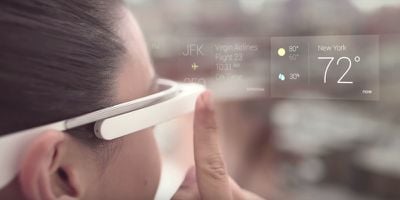Apple has long been rumored to be working on some kind of augmented reality headset, and in a new note to investors, Apple analyst Ming-Chi Kuo said that he expects the Apple Glasses to launch in 2022 at the earliest.

Taiwanese site DigiTimes also recently said that Apple's AR glasses could launch by 2022 as suppliers work to ramp up development, and The Information has also suggested a 2022 launch date. Rumors have indicated that Apple's first AR headset will look similar to Facebook's Oculus Quest, but with a sleeker design that uses fabrics and lightweight materials to make it comfortable to wear for long periods of time.
Apple Glasses could feature a high-resolution display and are likely to be reliant on the iPhone for processing power to keep them slim and lightweight. The glasses are expected to run a new operating system, rOS (or reality OS), and Apple is exploring touch panels, voice activation, and head gestures as a means of control.
Kuo in the same note said that Apple is working on two new iPad models, which include a 10.8-inch iPad and an 8.5 to 9-inch iPad mini. These new iPads are expected to launch in the second half of 2020 and the first half of 2021, respectively.
We predict that Apple will launch the new 10.8 inch iPad and 8.5–9 inch iPad mini models in 2H20 and 1H21, respectively. GIS will be the main touch panel supplier. The two new iPad models will follow iPhone SE’s product strategy, and selling points will be the affordable price tag and the adoption of fast chips. We believe that GIS will be the primary touch panel supplier for these two new affordable iPad models because the company is the largest medium-size touch supplier, thanks to the cost advantages of Megasite. We think that two new affordable iPad models will significantly contribute to GIS’s revenue because affordable models account for 60–70% of total iPad shipments.
Kuo said that he believes the two new iPad models will follow the iPhone SE's product strategy, which means affordable price points. At 10.8 and 8.5 to 9 inches, both iPads would be larger than the current models.
The existing low-cost iPad is 10.2 inches, while the current iPad mini is 7.9 inches. It's not clear if Apple plans to introduce larger-sized tablets or increase the available display size through bezel reduction.
Kuo previously said that Apple was working on an iPad mini with a mini-LED display that could be released as soon as late 2020, but it's not clear if the larger iPad mini mentioned in today's note is the same iPad mini that will get a mini-LED display.























